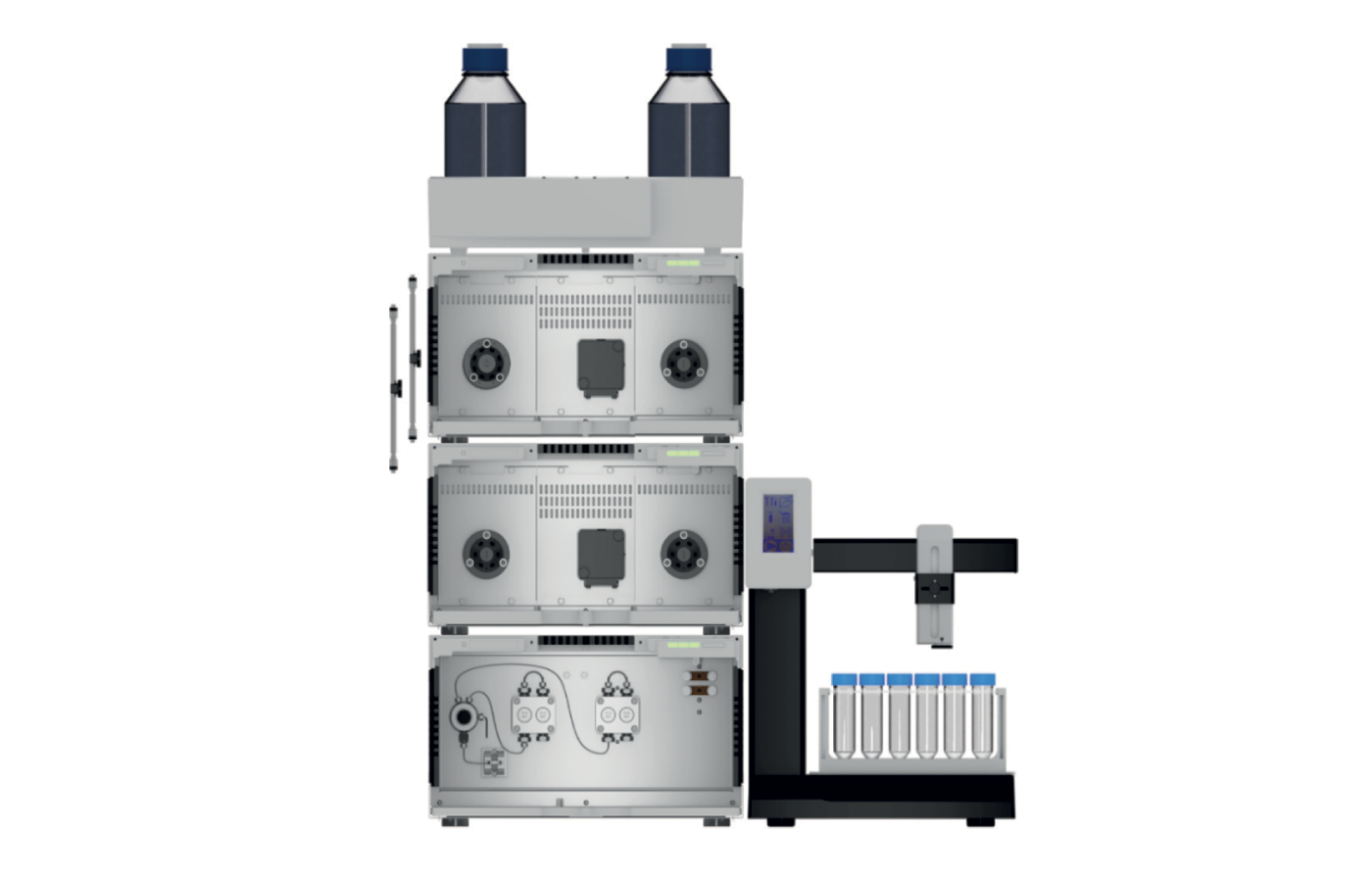Peak recycling is a separation technique used to improve the resolution of two closely eluting peaks. It is applied for isocratic separations when other optimization steps, such as changing the flow rate or solvent composition, fail to improve the resolution between the target peaks.

Using repeated separation of a mixture by cycling it through the chromatographic system multiple times, peak recycling effectively increases the column length and the number of theoretical plates without actually needing to use a longer column or increasing system pressure. This approach allows the usage of smaller particles (with a diameter of 5 μm, for example), which aren’t usually used in preparative applications with high flow rates due to the high back pressure.
There are clear advantages to peak recycling available, but there are several approaches to choose from – and picking the best one for your application can be challenging. Here, Yannick Krauke, Senior Scientist at KNAUER Wissenschaftliche Geräte GmbH walks us through the different strategies and solutions available.
What are the main benefits of peak recycling?
Peak recycling is most often applied to the separation of substances, with similar structural and physical properties or similar retention behavior, which cannot be separated using “standard” approaches. A good example for these targets are enantiomers, diastereomers, and isomers. For chiral separations in particular, peak recycling is an interesting alternative because dedicated columns are costly, and this technique allows users to purchase shorter and therefore smaller columns. Other important application areas are gel permeation and/or size exclusion chromatography.
An effective peak recycling method will reduce the costs for columns, as well as solvent consumption by partial solvent recycling, and enable users to work with a longer column bed without having the issue of increasing back pressure.
What are the main approaches to peak recycling?
The basic principle of the peak recycling process is to re-inject the eluted target peaks back to the column, forming a circuit that can be repeated several times, simulating one long column.
The close loop or classic peak recycling uses one column. The eluting peak pair is re-injected in the column by passing through the solvent pump. This is realized by connecting one outlet port of the fractionation valve to one solvent port of the major pump. As soon as the target peak elutes from the column and passes the detector, the fractionation valve is switched to this port directing the flow to the major pump. The recycling step is repeated until the two peaks are separated or the column bed length is no more long enough to elute all peaks before re-injection.
This system set-up can be improved by adding a second column and a twoposition valve to the system. The peak pair is now directly injected from one to another column by switching the valve as soon as the peaks are eluted from one of the columns. Compared with the classic approach, the two column configuration results in significantly better peak resolution with fewer switching cycles as the peak pairs are not broadened by passing through the whole system and pump during the recycling step.
An additional upgrade to the system is the integration of a second UV detector between the two columns, with everything connected to an 8-port 2-position valve. With this additional UV detector, the number of switching cycles until separation can be determined in one run, thus accelerating method development. As soon as the separation is achieved, the columns are no longer switched and the target fractions are collected.
What are the main considerations when choosing a peak recycling method?
To apply peak recycling, the method must run in isocratic mode. The peak pair should reach the desired resolution before the column bed is too short to elute all components of the sample before reinjection. Ideally, a pre-mixed solvent is used, which would allow solvent recycling. Depending on the system setup, one or more separation runs must be measured to determine the number of switching cycles. Ideally, software is used to automate the process by recognizing the peaks and adapting the number of switches accordingly, as opposed to pure time-based switching.
Could you share more details about method development?
Depending on the selected system, the method development can be time consuming in the beginning. For example, if the system has only one detector, the sample is injected and, after the first switch, the flow is directed to the detector and the outlet. In the next run, two switches are performed before the flow is directed to the outlet; and the number of switches is increased until separation is reached. Therefore, if the separation needs seven switches, seven runs must be performed. After that, the number of switches is determined and then the separation can start. However, with the two-detector set-up the number of switches can be determined in a single run.
As already mentioned, peak recycling only works in isocratic mode. If the desired separation originates from a gradient method, this has to be transferred to an isocratic separation.
Ideally, there should be no components in the sample that are eluting far before or after the target peaks. This significantly reduces the number of switches due to elongated elution times.

Please tell me about KNAUER’s peak recycling solutions…
KNAUER offers a broad range of systems and system components for preparative liquid chromatography that can be customized according to the separation and purification task. For example, you can start with a simple set-up and upgrade it later. Another key element is the software; KNAUER offers the PurityChrom6, which is specifically designed for purification tasks and their automation.
Even a pre-cleaning step, where the target peaks are first trapped in a column while the matrix is removed before peak recycling, can be included in the system set-up.
How does KNAUER further support customers with peak recycling?
KNAUER has a team of dedicated application specialists who are experienced in peak recycling and are happy to help with open questions. In addition, we published four application notes on this very topic on our website, and we share our results with the scientific community at various conferences.
Any final thoughts?
I’d like to reiterate that peak recycling is a good choice for purification of closely eluting compounds, enabling the use of columns with smaller particles to increase the resolution, while reducing costs. Moreover, it can be performed with an already existing preparative LC system. But with a small upgrade, method development can be facilitated significantly – even automated.





